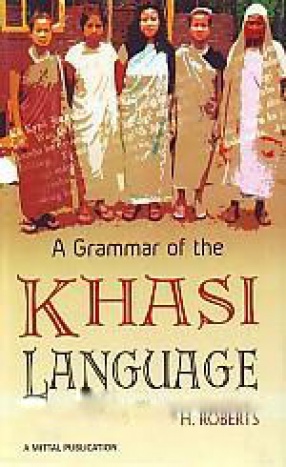A Grammar of the Khasi Language
During the last century when the then British Govt. of India took up the administration of the newly acquired Frontier Districts of Khasi and Jaintia Hills of Assam, they faced the language difficulty because they had no practical knowledge of the native languages. To overcome the difficulties of understanding the language of the Khasi, who were by far the most numerous and powerful of the North-East frontier tribes, the author of this Volume wrote over hundred years ago, Grammar of the Khasi Language as the guide par excellence for those who had to come everyday into personal contact of the tribal people during their administrative duties. It is indeed the product of his persevering and painstaking research. According to the author, the Khasis have no written language of their own, and therefore no literature of any kind. This Khasi language is a member of that heterogeneous group, sometimes called the Sub-Himalayan of which so little is known. The race affinity of the Khasis to the surrounding Hill tribes- Garos, Kookies, Nagas, Looshais, Manipuris etc. and even to the remoter Chinese is unmistakable. Grammar is the science which teaches how to speak and write a language correctly. The present book is the Grammar of Khasi Language. It has two prominent features (i) Complete paradigms for the conjugation of all verbs based on native usage (ii) A detailed treatment of the Article-subjects in regard to which the Khasi language processes features altogether of its own, as compared with the other members of the Sub-Himalayan group. This book of grammar was originally written for Khasi students attending the hill schools which enabled them to acquire not only the knowledge of their own language but also mastering corresponding forms in English. It continues to be as useful or even more useful or even more useful today not only for tribal students eager to learn Khasi language but also for all those who are entrusted with the administration of these remote frontier areas.
Get it now and save 10%
BECOME A MEMBER








Bibliographic information